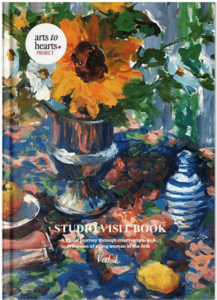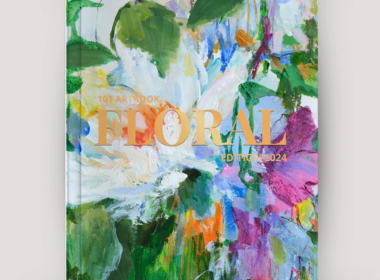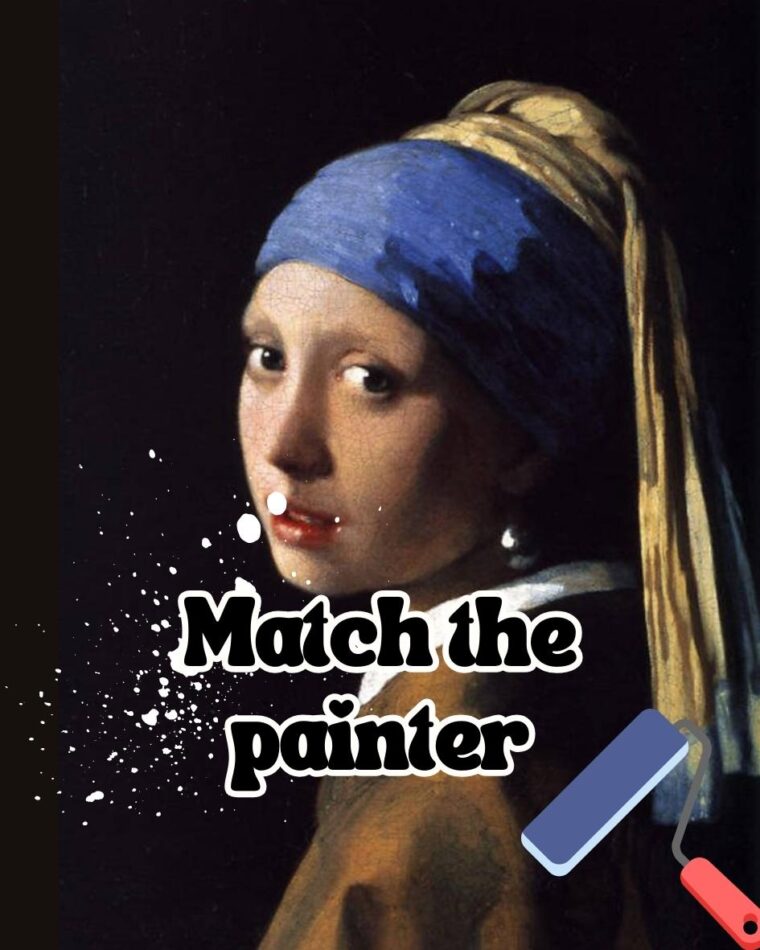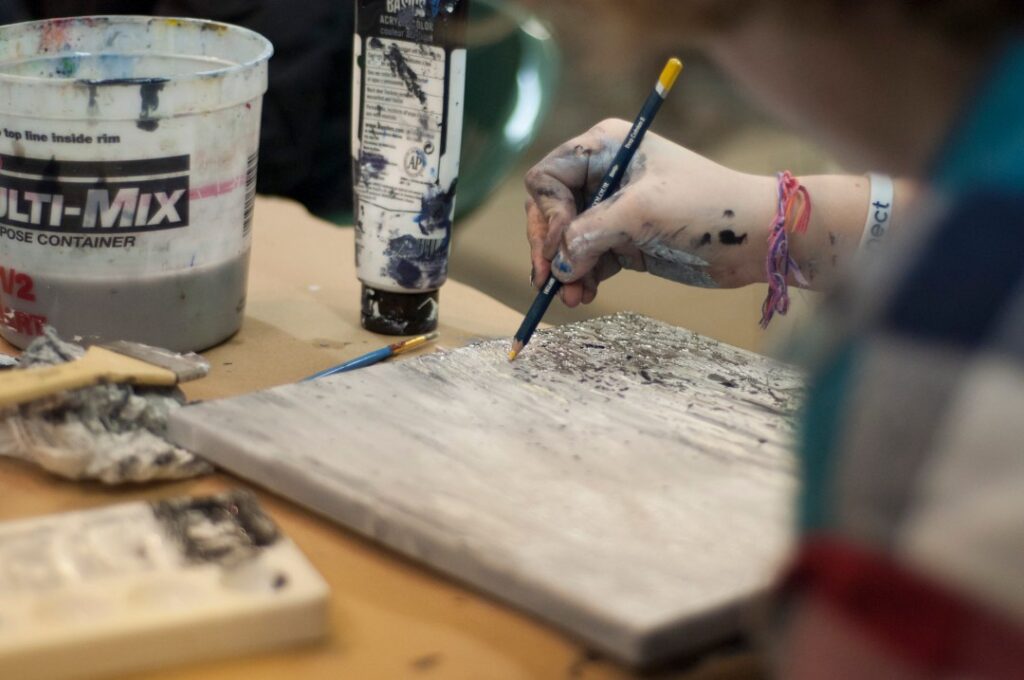
9 tips to successfully manage your finances as an artist
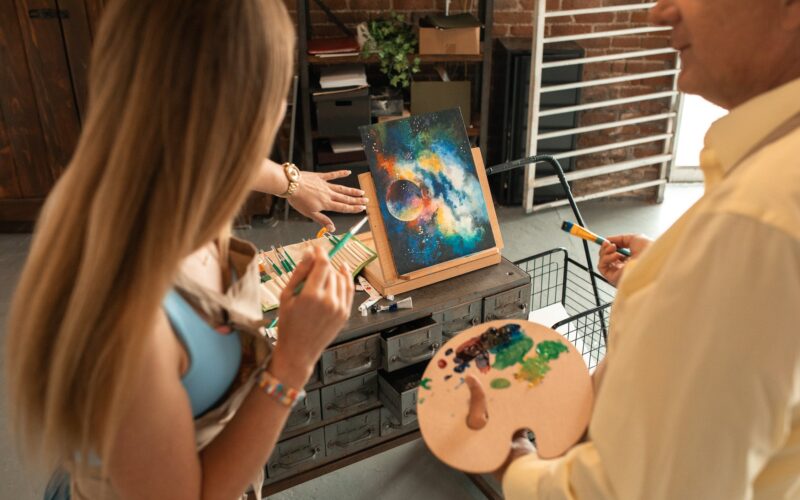

As an artist, your passion and talent have the power to inspire, but they can also lead to unique financial challenges.
Becoming a professional artist is a big dream for most of us. We adore creating art and would love to do it full-time. But, artists also have bills to pay and meals to put on the table. So, how do they make a living?
The truth is, art is a unique thing. It’s not something people need like food or shelter; it’s more like a special treat. There’s a lot of art out there, but not as many people looking to buy it, not enough walls to hang all the paintings, and more artists than there are galleries to represent them. This makes becoming a pro artist a real challenge because it’s super competitive.
But, There’s definitely money to be made in the art world, and it can be quite rewarding! However, it’s essential to navigate the art world carefully when it comes to your finances. There are some unwritten rules to keep in mind, and certain money-making approaches can even enhance your reputation and art career. This is especially true when you’re exploring the avenues to generate income as an artist.
From budgeting and tax tips to marketing your art and navigating the world of commissions and royalties, we’ve got you covered. These 9, easy-to-follow advice will help you create a strong financial foundation, allowing your dreams to flourish.
So, whether you’re an aspiring artist looking to turn your passion into a profitable venture or an established creative seeking to enhance your financial know-how, let’s get started!
1. Know your SWOT
SWOT stands for Strengths, Weaknesses, Opportunities, and Threats. Think of it like an annual checkup for your art business’s financial health. Here are some simple questions to consider:
Strengths
– What are your strong points? Do you have a great location? What skills and connections do you have?
– Are there unique or cost-effective resources you can use?
– What makes you stand out? What do you do differently or better than others?
Weaknesses
– What parts of your art business need improvement?
– What things waste your time, cost you sales, or stress you out?
– Are there things successful artists do that you’re not doing?
Opportunities
– Are there new chances in the market or ways to reach new customers?
– Did you miss any opportunities that are still available?
– What would be the perfect opportunity for you?
Threats
– What ongoing problems do you face?
– Are changes in the market or technology hurting your income or how you work?
– Do you have debt or money problems?
Once you have your answers to these questions you can easily set a track to follow for your art business.
2.Establish a Budget and Stick to It
Creating and maintaining a budget may not sound as exciting as painting on a blank canvas, but it’s an essential step in managing your finances effectively. Start by listing all your monthly income sources, whether they come from art sales, part-time work, or other sources. Next, outline your fixed expenses, such as rent, utilities, and groceries.
Once you have a clear picture of your income and expenses, set aside a portion for savings and an emergency fund. These savings cushions will provide you with financial security during lean times and allow you to invest in your art career when opportunities arise.
Don’t forget to allocate funds for art supplies and studio expenses, ensuring that you can keep creating without worrying about running out of materials. Finally, track your spending meticulously to stay within your budget. Several budgeting apps and tools can make this process easier, helping you achieve your financial goals while pursuing your dreams.
3. Search for various income streams
Relying solely on art sales can be a rollercoaster ride for your finances. To stabilize your income and reduce financial stress, consider diversifying your income sources. While your artwork may be your primary passion, exploring supplementary revenue streams can provide stability.
Here are some ideas:
Teaching workshops
Share your skills by conducting workshops or classes. Teaching can be both financially rewarding and creatively fulfilling.
Freelance work
Offer your services for freelance projects like illustrations, graphic design, or custom commissions. Freelancing can provide a steady income between art sales.
Merchandise:
Create merchandise featuring your art, such as prints, apparel, or accessories. Selling these items can be a consistent source of income.
Gallery representation:
If possible, seek representation by a reputable art gallery. Galleries can help you reach a wider audience and sell your artwork, though they typically take a commission.
By diversifying your income streams, you not only increase your financial stability but also expand your reach as an artist. This way, you can continue pursuing your passion while ensuring a more secure financial future.
4. Protect your art and assets with insurance
Your artwork is not only your creative expression but also a valuable asset. Protect it and your financial stability by investing in art insurance. This specialized coverage can safeguard your art against various risks, including theft, damage, or loss during transit.
Art insurance comes in various forms, so it’s essential to explore options tailored to your specific needs. Here are some types of art insurance to consider:
In-Home Coverage
This policy protects your art collection within your home or studio. It typically covers risks like fire, theft, or accidental damage.
Transit and exhibition insurance:
If you transport your art to exhibitions or galleries, consider transit insurance. It provides coverage during transit and while on display. If you teach workshops or host events in your studio, liability insurance can protect you from potential legal claims.
While insurance may seem like an additional expense, it can save you from significant financial setbacks in the event of unexpected accidents or disasters. Be sure to shop around for insurance policies that fit your budget and the value of your art collection.
5. Keep financial records with an inventory Management Sheet
Effective financial management for artists begins with organized record-keeping, and the ATH Inventory Management Sheet is your invaluable tool for this task. This user-friendly spreadsheet is tailored to the unique needs of artists, helping you stay in control of your finances effortlessly.
Here’s how ATH Inventory Management Sheet can elevate your record-keeping:
Streamlined Income and Expenses Tracking:
Easily input every sale, commission, or expenditure related to your art career in one centralized location. The sheet’s intuitive design simplifies data entry and categorization.
Effortless Receipt and Invoice Management
Upload and organize digital copies of receipts for art supplies, studio rent, and other business-related expenses. Create and store professional invoices for every sale or commission with ease.
Tax Documentation Assistance
The ATH Inventory Management Sheet provides a dedicated section for tax-related documents, ensuring you never miss a deadline. Keep track of 1099 forms, W-9s, and relevant tax deductions conveniently.
Grant and Residency Tracking:
Maintain records of your grant applications, submissions, and responses. Use the sheet to track your progress and stay on top of important dates and requirements.
The ATH Inventory Management Sheet empowers you to maintain comprehensive and organized financial records, giving you a clear overview of your financial health. Plus, it simplifies the process of demonstrating your financial stability when seeking opportunities or applying for grants, ultimately helping you advance your art career with confidence.
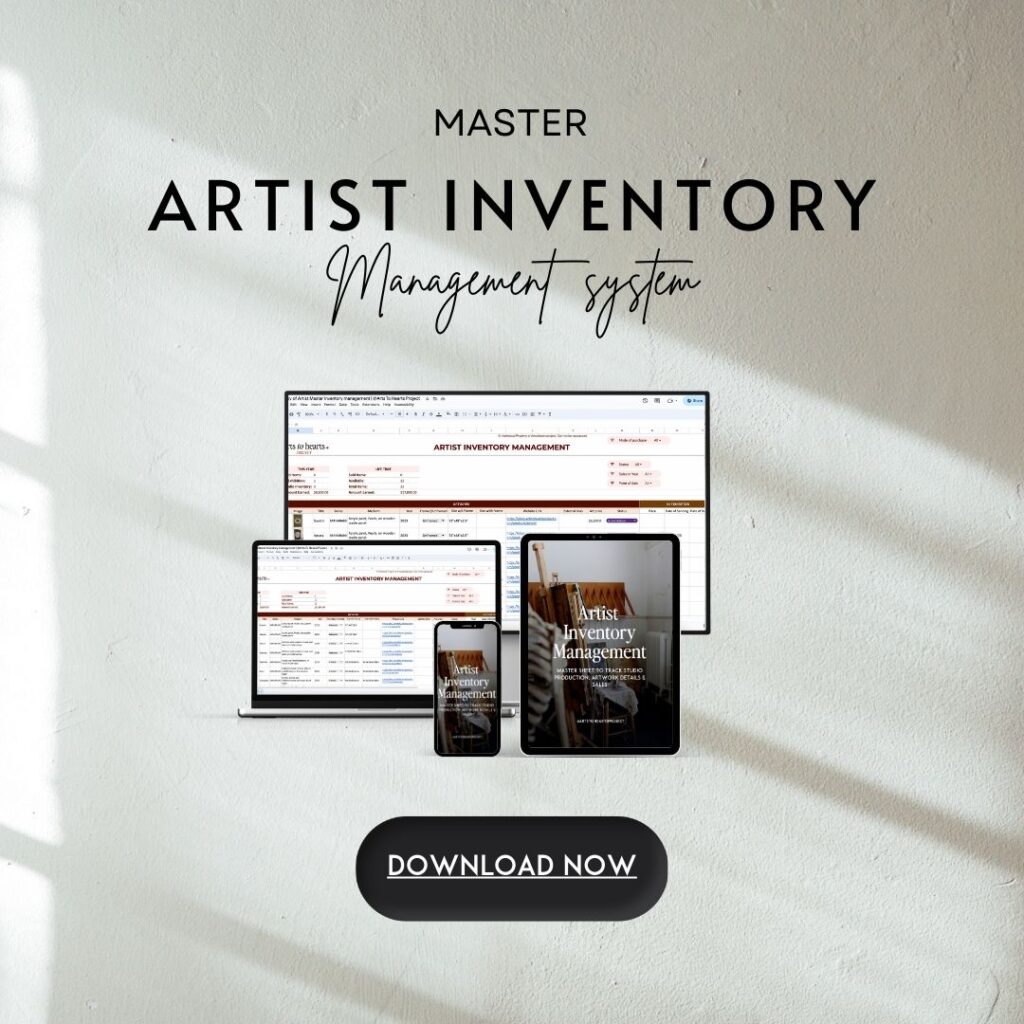
6. Set clear goals and keep trying new ways
Setting clear financial goals and milestones is essential for your journey as an artist. Start by figuring out what you want financially. Maybe it’s earning a certain amount from your art, saving up for studio improvements, or paying off debts. Make sure your goals are realistic and fit your situation.
Next, break these financial goals into smaller steps or checkpoints. Think of them as a roadmap to reach your bigger goals. Give each step a deadline to make sure you stay on track. It’s like setting a schedule for your money plans.
Regularly check how you’re doing and be ready to change things if needed. Life can throw surprises, so it’s okay to adjust your plans. If dealing with the money side of your art career feels tricky, don’t be afraid to get help from a financial advisor or accountant who knows about art. They can give you personalized advice to make your financial dreams as an artist come true.
7. Keep a separate emergency fund account
Building an emergency fund is like creating a financial safety net for your art career. It’s all about being ready for unexpected expenses or times when your income isn’t steady.
Start small by saving a bit each month, even if it’s just enough to cover one month of living costs. Gradually, aim to have enough to cover three to six months’ worth of expenses.
Make it easy on yourself by setting up automatic transfers from your main bank account to your emergency fund. Treat it like a necessary bill, and you’ll save consistently.
Keep this fund in a separate savings account so you’re not tempted to spend it on non-emergencies. Use it only for true emergencies, like unexpected medical bills or urgent home repairs.
And here’s the key: if you do have to use your emergency fund, make it a priority to refill it as soon as you can. Having this financial buffer ensures that you can keep pursuing your art, no matter what unexpected challenges come your way.
8. Stay up-to-date with your tax responsibilities
Taxes may not be the most exciting part of your art career, but they are a crucial aspect that demands your attention. Understanding your tax responsibilities can help you avoid potential pitfalls and financial stress down the road.
Managing your taxes as an artist is vital, and it’s not as complicated as it may seem. First, keep detailed records of your income, expenses, and any tax-related documents. This will make tax preparation much easier.
Second, get to know the deductions available to artists, such as art supplies, studio rent, and travel for exhibitions. These deductions can lower your taxable income. Third, stay updated on tax laws because they can change, and it’s essential to know how they affect your income and deductions. If taxes start feeling overwhelming, consider getting help from a tax professional who knows the art world. They can guide you through the complexities and ensure you’re following the rules.
Lastly, don’t forget to set aside some money for taxes from your income to avoid surprises when tax season rolls around. This way, you can navigate your tax responsibilities confidently and maintain your financial stability as an artist.
9. Gain from the experiences of other artists
Once you’ve established your financial goals, you gain a clearer understanding of what success means for your art career. It’s essential to realize that the journey to success, even for renowned artists, is far from a straightforward path. Researching deeper into the real stories behind an artist’s rise to fame can provide both comfort and inspiration when you encounter financial obstacles.
Select a few artists you admire, whether they are contemporary or from the past, and explore their life stories. Pay special attention to the moments that preceded their breakthrough, including chance encounters or the jobs they held before achieving recognition. Consider these artists as your mentors, drawing valuable lessons from their experiences. Incorporate their insights into your own circumstances, allowing you to take measured steps toward your financial goals.
Above all, maintain a sense of curiosity. Embrace the idea that unexpected opportunities for your art career can emerge when you least expect them. By learning from the journeys of others and staying open to new possibilities, you can gain financial success in your art business with greater confidence and resilience.
Discover ATH Mag – the essential read for all creative souls. Inside each edition, you’ll find captivating interviews and stories about talented women artists, both well-established and up-and-coming, from around the world.
This magazine is a treasure of knowledge, inspiration, and empowerment, tailored for artists, creative entrepreneurs, collectors, art agents, curators, gallerists, art students, and anyone eager to dive into the vibrant art world. Don’t miss out on the chance to fuel your creativity and connect with the global art community. Get your copy of ATH mag now.
Have you had the chance to implement any of this valuable advice in your art business journey?
We’d love to hear about your experiences and how these tips have helped your art practice. Whether you’ve found success with these ideas or have discovered different ways to achieve your creative goals, please share your thoughts in the comments below. Or you can reach out to us via email at [email protected] or send us a direct message on our Instagram @artstoheartproject.
Your experiences and insights can inspire and guide fellow artists on their unique journeys to fulfilment. Let’s keep supporting and learning from each other in our creative pursuits!

